
Pathfinder: Wrath of The Righteous Review
When Pathfinder: Kingmaker managed to command some attention away from established competitors like Divinity Original Sin II: Definitive Edition and Pillars of Eternity II: Deadfire back in 2018, I knew immediately that I would be paying close attention to developer Owlcat Games from that point forward. While Kingmaker had one of the worst releases I've personally experienced in terms of polish and general user-friendliness, I saw enough potential in the studio's debut title that I revisited the game a year later to sort of give it a fair shake -- not something I would have normally done for a poorly reviewed game.
When Pathfinder: Wrath of the Righteous was announced shortly thereafter, I had high hopes that a second go-around would provide a stronger impression in a sophomore effect, and maybe reach the potential that I thought Kingmaker, ultimately, fell short of. While Wrath of the Righteous shares in its predecessor's ambition and many of its key strengths, too many familiar pitfalls keep it from being an undisputed recommendation except for the most ardent fans of CRPGs.

One immediate takeaway from Wrath of the Righteous is that it is simply a massive game, similar to its predecessor. My completion playtime ended at 112 hours, and those less compelled to explore every nook and cranny are still looking at several dozen hours of playtime if they're planning to see the game through to completion.
While Kingmaker's narrative consisted of several tales across the Stolen Lands that eventually coalesced in the game's final Acts, Wrath instead tells a more contiguous story centered around the phenomenon known as the Worldwound, a planar rift of mysterious origin that serves as a gateway between the demon-infested realm of the Abyss and the world of Golarion.

Immediately upon starting the game, Wrath of the Righteous's dedication to its pen-and-paper roots is immediately obvious, manifested in one of the more involved character creation processes I've seen in an RPG. With dozens of classes to choose from, each with 3 or more bespoke archetypes to decide between alongside selecting a character background, deity, favored school of magic, or several other accompanying selections -- it's easy to feel a sense of choice paralysis right out of the gate. I imagine the degree of information overload at character creation depends on one's familiarity with Pathfinder, knowledge of class-based RPGs in general, and general inclination towards just picking a class and rolling with it. I personally found myself spending nearly an hour paging through the various options before arriving at Cavalier, though I did carry some base-level knowledge from my Kingmaker playthroughs.
After finally deciding on a class and playstyle, the game immediately opens up with a demon lord sieging the city of Kenabres, a fortress near the fringe of the Worldwound. The persistent threat of the nearby otherworldly rift is immediately made apparent as a brief city festival is cut short as demons start to overrun the courtyard. In this way, a clear objective is immediately thrust onto the player -- to retake the city and eventually stop the demon horde for good.

Combat in Wrath of the Righteous is a pretty standard Real-Time-With-Pause experience, drawing from similar roots as classics such as Baldur's Gate or so many games built-in that framework since. Moving, casting spells, or taking actions occurs within combat rounds, while utilizing certain items or possessing certain feats can change, quicken, or augment how many actions a character can take in a given round. Taking a full round to attack without moving or taking advantage of positioning to utilize attacks of opportunity are other ways to shift how a combat encounter plays out. Wrath of the Righteous doesn't do a whole lot new in this area but it doesn't need to. Despite the well-worn design, Wrath remains an incredibly ambitious game despite playing its direct combat cards pretty straightforward.
One thing that Wrath of the Righteous does have out of the box is a fully-featured turn-based mode that can be activated at any point in any battle. Originally stemming from a popular Kingmaker mod, the addition of an officially supported way to play in turn-based was a marketing highlight leading up to release. As a fan of so many turn-based RPGs, on paper this felt like a dream option. However, I never quite gelled with the speed of combat in this mode, which becomes excruciatingly slow.
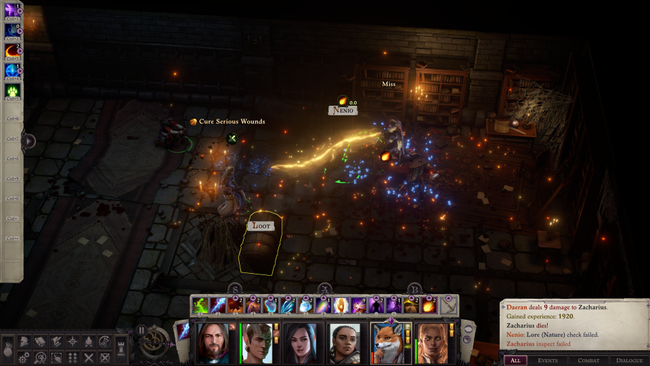
Many encounters in Wrath feature either numerous enemy mooks to clear out of the way or mini-bosses with high armor values. What this means is that my short attempt to play in turn-based involved either having to micro-manage dealing with weak enemies or repeatedly swinging at a single target just waiting for attacks to hit, even with positive modifiers to hit chance. While most combat encounters felt fair and fitting for the real-time combat, the same in turn-based became a boring slog. For instance, I would normally have my Cavalier or Oracle cast a series of supportive spells in other encounters while the rest of the party would act concurrently in the meantime. Replicating this in a turn-based fashion simply isn't tenable.
My impressions on this were thoroughly cemented when a late-game quest once again forced a turn-based encounter as part of a gimmick. What would have normally been a 5-minute exercise instead became a 40-minute lowlight of the game. It's possible that certain edits to the game's configurable difficulty settings would make this more palatable, but keeping combat in real-time feels like the intended play-style without needing an abundance of tweaks alongside.
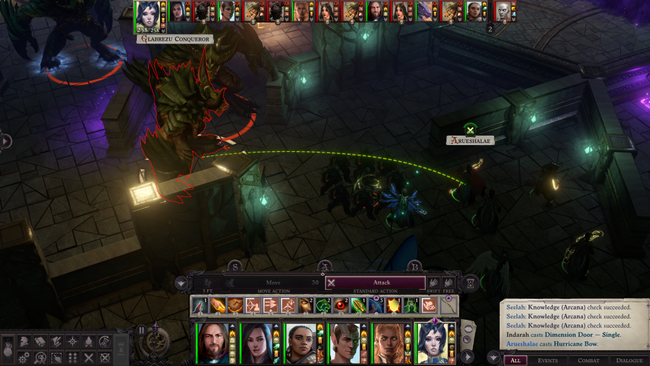
Just like in Kingmaker, Wrath of the Righteous consists of an impressively large number of playable characters, each with a decent amount of voice acting and numerous quests to complete. One boon of the game's long playtime is that it manages to give each of the several companions the space they deserve to flesh out their motivations and allow realistic pacing as their stories unfold over the course of the game.
While not each companion is equally compelling, I found myself eager to shift characters in and out of my party so that I could both experiment with their class and playstyle along with experience their incorporation into the story at large. Arueshalae, a succubus intent on ascending beyond her demonic nature, is a highlight of the cast, but nearly every companion has a strong hook to get players invested into each of their personal stories.
Impressively, across many questlines, I was delighted to see the different companions interact with each other as they responded to the goings-ons of the current story beat or quest objective, regardless of who I decided to fill out my party with. In addition to this, each party member often has additional dialogue to sift through as the game's chapters roll through, or even relating to their thoughts of leading the Crusade against the demons. The general alignment of each companion is also quite varied, with several actively opposing some of the more key decisions I decided to make, resulting in them turning on the party. While this was frustrating in a way, it gave a sense of true weight to the nature of the game's conflict.
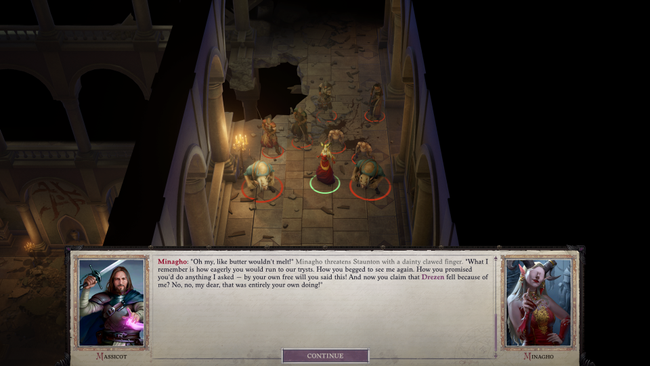
The sheer number of quests, numerous allied and enemy factions, and length of the narrative means that several supporting characters and a large cast of villains also often take center stage and weave in and out of the story in addition to the playable cast. While Kingmaker often tied specific NPCs or villains to certain regions of the world or chapters of the game, Wrath of the Righteous more naturally meshes these characters in and out of the narrative more organically. The result is that the game ends up feeling less artificially dissected from a story standpoint. Areelu Vorlesh in particular manages to be quite a sympathetic villain that nearly matches the fantastic Nyrissa from Kingmaker, though some ultimate revelations from near the end of the game had her fall just short of that mark for me.
While the game's story itself is largely linear, Wrath of the Righteous uses Pathfinder's 'Mythic Path' system to create some variability in how events specifically unfold. While I was only able to experience the Azata path due to the length of my playthrough, various dialogue options and quest outcomes clearly give space where the other Mythic Path options would have given me additional choices for a few key areas of the story. The story permutations exist alongside the specific benefits each Path bestows upon the character from a pure gameplay perspective as well. The supporting nature of many of the Azata's abilities tethered nicely to my Cavalier as more of a supporting anchor for the party while I built some of the companions to be more pure damage dealers. Just like my experience with Kingmaker, archers, in general, remain incredibly strong units that are easy to build.
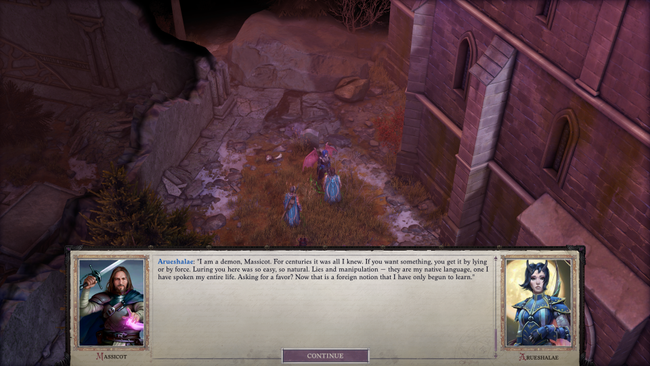
Evidently, it's hard to avoid comparisons to Kingmaker when discussing Wrath of the Righteous for several reasons, none more crucially than Wrath of the Righteous's Crusade mechanics. Kingmaker's premise substantiated several gameplay elements beyond the conventional combat encounters and general questing. While the strict focus has shifted here, many of those same gameplay elements have been brought over to some extent. While the inherent time-limits for quest completion are thankfully absent in Wrath of the Righteous, in its place is a whole other set of systems involving leading an army of crusaders against the attacking demonic forces.
Instead of managing a fledgling kingdom against threats of trolls, undead, and barbarians, the objective here is much more straightforward: to lead a crusade against the demons of the Worldwound and learn how to close it for good. While Wrath's narrower narrative scope might have suggested a more streamlined experience, my time with the game found a similarly messy, kitchen-sink approach where extra gameplay systems are continuously layered and added even hours into the game, and I often found myself wishing that, maybe, leaving some of these ideas behind and incorporating fewer into the final game may have actually been the better move.
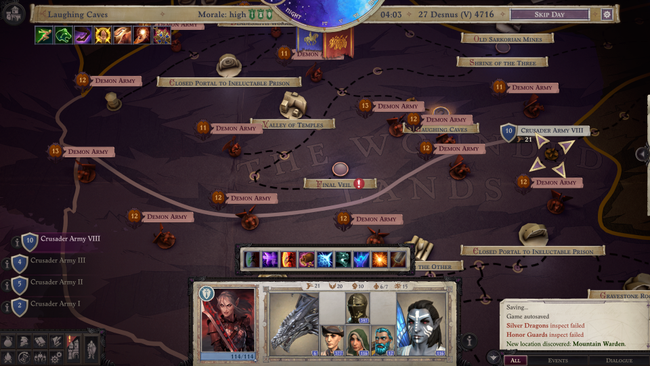
After finishing Act 1 and leaving the city of Kenabres, Crusade battles become a key gameplay component. In addition to controlling a primary party of companions, players will be able to tab over to a set of crusader armies whenever they're viewing the world map. In this mode, generic soldiers, archers, cavaliers, and the like can fight against demon forces in turn-based grid battles reminiscent of Heroes of Might and Magic. This becomes necessary for two reasons: only crusader armies will be able to clear enemy forts out of the way of the player's party, and later in the game player forts will be repeatedly under attack by respawning demon armies.
Unfortunately, just like my experience with Kingmaker, almost all of the extra-curricular gameplay elements layered in this manner felt incredibly superfluous to me. Crusade battles never approached anything interesting, and my best units ended up being the basic archers I started with. Despite later unlocking advanced classes, new spells, and even dragons, I often found myself sticking with my basic archer loadout and simply wanting to clear all the enemies off the map so I didn't have to deal with them anymore.

One of Wrath of the Righteous's defining characteristics is how it continues to shift the gameplay framework from Act to Act, despite the 100-plus hour runtime. Act 1 takes place wholly within Kenabres, followed by introducing the world map and Crusade battles in Act 2. The mid-point of the game finally introduces Crusade Management, which borrows from the Kingdom features in Kingmaker, while Act 4 drops all of these features entirely as the story shifts to a one-time location for the entirety of the chapter.
As the game slowly doled out new gameplay mechanics in each Act, I quickly came to realize how unnecessary almost all of them felt. I went ahead and spent Crusade resources upgrading my forts and armies but the impact it had on the moment-to-moment gameplay was minimal. Resourcing specific requests and upgrading generic stats like Leadership and Diplomacy felt almost entirely sequestered to a bar in the UI that I was obligated to improve. Certain progression systems tied to this gave my Crusade armies and generals new capabilities or spells, but fell flat because I never found myself at all eager to engage in more Crusade battles.
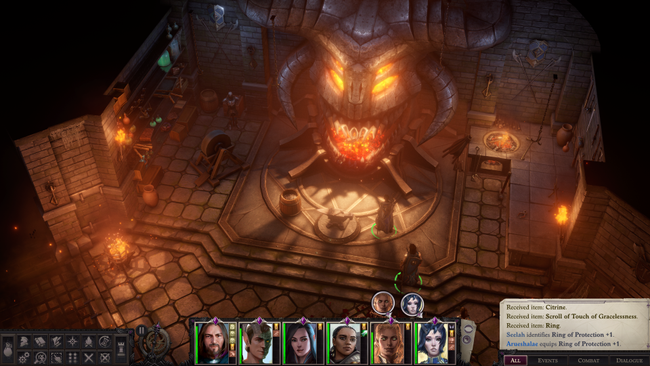
The one exception to this impression came early in Act 5, where I learned that the armies that I had built up in an earlier Act had eventually been replaced due to specific events in the back half of the game. While this was of course frustrating, it did sell the passage of time and hardship of the extended series of battles that had persisted over the course of the game. In this specific instance, I appreciated how Owlcat utilized the Crusade gameplay elements to inform the story itself.
Finally, while Wrath of the Righteous is certainly in a much better place than Kingmaker was in terms of polish, I still found several rough spots, especially in the later Acts of the game. My character icons would often disappear on the world map, several times I lost the ability to pause or open a menu without restarting the game, often found enemy units clipping through the environment, and I ended up with multiple quests seemingly broken and stuck in my quest log. While I've played enough similarly rough games and have gotten very used to these sorts of fixes coming in over time, it's still not the home run it could have been.
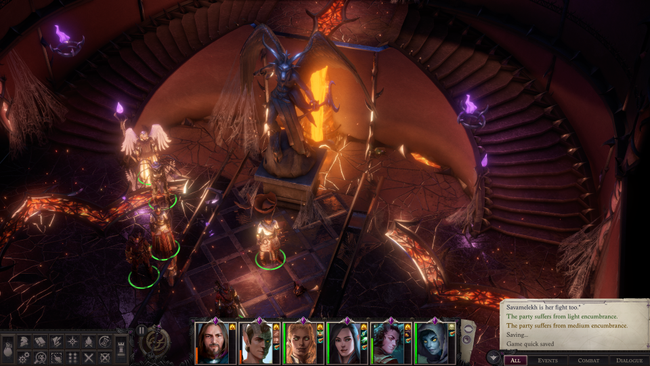
Despite my misgivings with many of the Crusade-related mechanics, needless management systems, and prevalent bugs -- past all of that is an engaging game that is still easy to recommend to fans of RPGs. A strong narrative that carries itself for the entirety of its lengthy runtime, a huge cast of compelling characters that interface with the story in smart ways, plenty of unique buildcraft, gorgeous art, a variety of quests, and a true commitment to consequence make Pathfinder: Wrath of the Righteous one of the most ambitious RPGs of the year, even if it ultimately falls short.